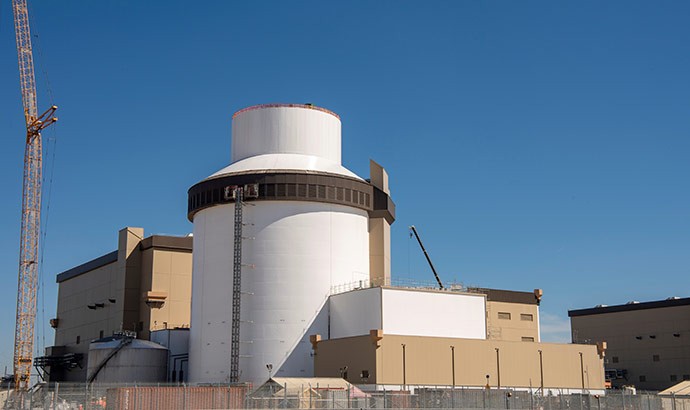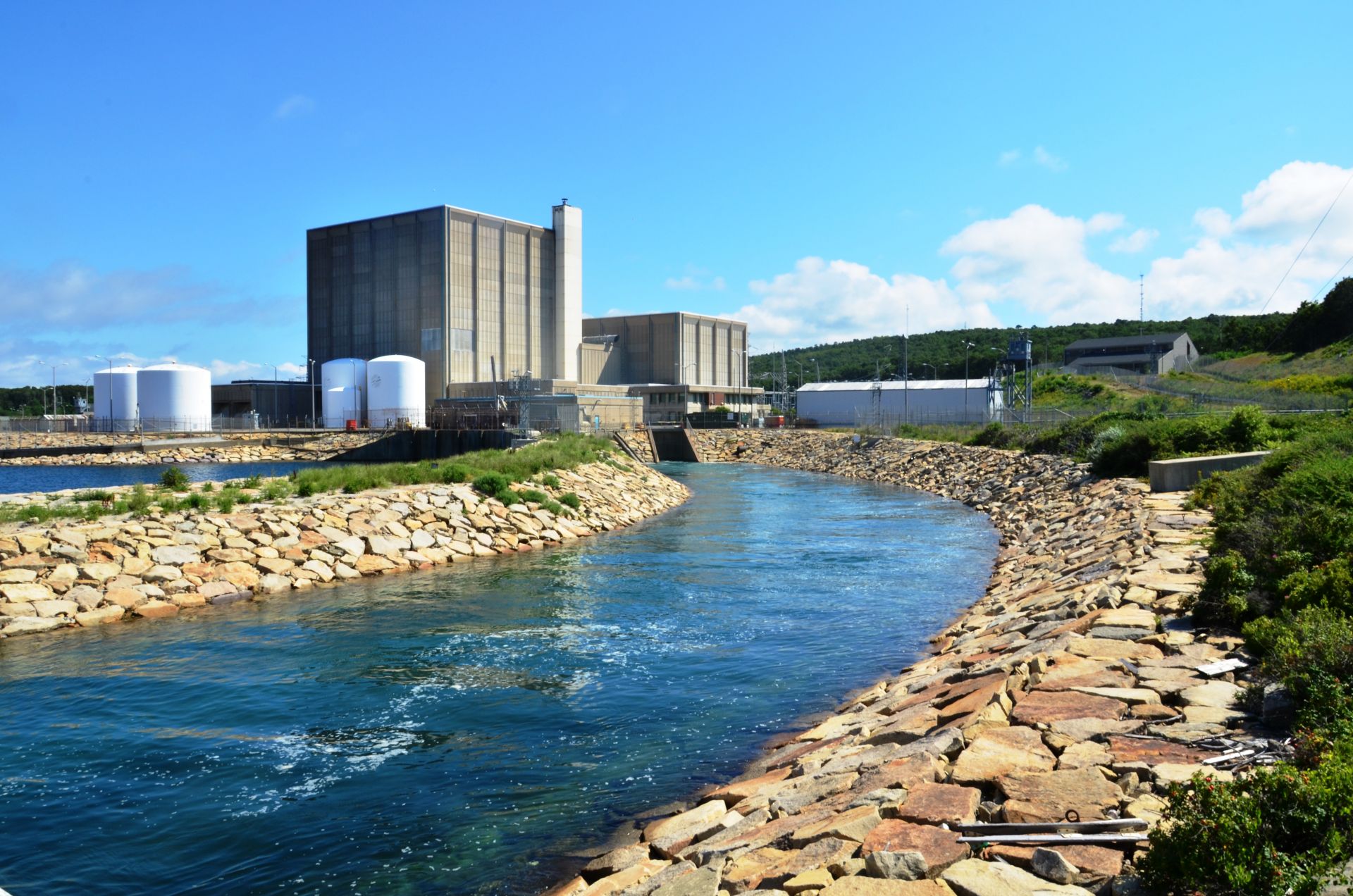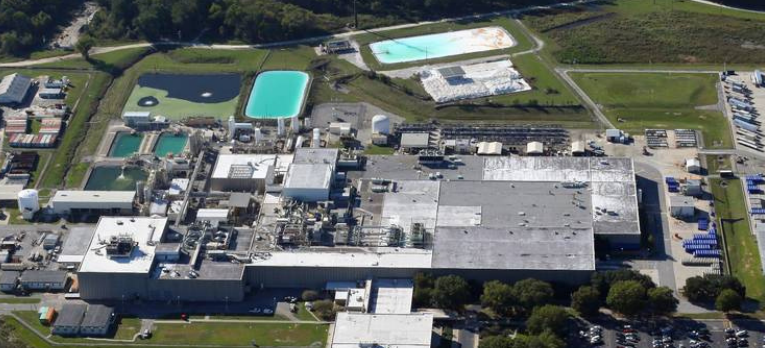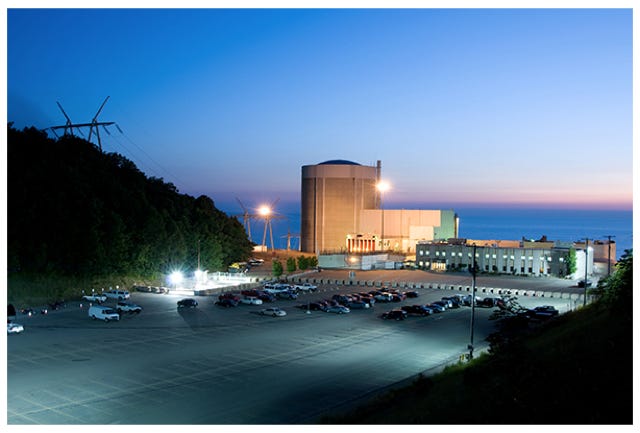Iran plans four new nuclear plants

A ceremonial ground-breaking event took place last week at the site where the Atomic Energy Organization of Iran (AEOI) says four new nuclear reactors will be built over the next 20 years.


A ceremonial ground-breaking event took place last week at the site where the Atomic Energy Organization of Iran (AEOI) says four new nuclear reactors will be built over the next 20 years.

The American Nuclear Society President’s Special Committee on Certification is making progress toward launching a nuclear certification program later this year. The program outlined to the ANS Board of Directors in 2023 is being designed to help establish industry standards and bridge workforce gaps in the nuclear sector to address the growing demand for qualified professionals in the nuclear industry.

Recent staff cuts at Ukraine’s Zaporizhzhia nuclear power plant (ZNPP) are raising concerns among international nuclear watchdogs.
Ahead of his visit to the plant on February 7, International Atomic Energy Agency director general Rafael Mariano Grossi told the Associated Press that he will focus on the impact of personnel reductions, especially while Russia has denied access to employees of Ukraine’s nuclear operator, Energoatom.

The Advanced Reactor Codes and Standards Collaborative (ARCSC) held its second workshop on November 30, 2023, in Washington, D.C. The hybrid event had just over 200 participants, including representatives from standards development organizations (SDOs), the Electric Power Research Institute, the Nuclear Energy Institute, national laboratories, government agencies, vendors, advanced reactor designers, and consultants. Also in attendance were representatives from other U.S. industry and international organizations, including the International Atomic Energy Agency. ANS Standards Board chair Andrew Sowder, senior technical executive at EPRI, welcomed attendees to EPRI’s offices, where the workshop was held.

Danagoulian
Areg Danagoulian, associate professor of nuclear science and engineering at Massachusetts Institute of Technology, draws on his experiences growing up in Soviet-era Armenia to argue that nuclear energy is crucial to “help strengthen liberal democracies that are being unprecedently threatened” by what he calls authoritarian regimes, such as Russia and China.
Disasters both natural and man-made: In his essay “How Nuclear Power Saved Armenia,” published by the Bulletin of the Atomic Scientists, Danagoulian recalls the shutdown of Armenia’s Metsamor nuclear reactors in 1989 in the wake of fears generated by the 1986 Chernobyl accident, which “dramatically undermin[ed] public trust in nuclear power as a safe source of energy.” He asserted that “the public perception of danger from nuclear power was magnified by the outrageous lies that the Soviet leadership spread about the disaster, the obvious incompetence and irresponsibility of the Soviet nuclear designers who built and operated the Chernobyl reactor, and the poorly executed cleanup efforts, which were compounded by miscalculations and gross mistakes.”
 A new report, A New Nuclear Age: How 2023 Developments Will Impact the Industry in 2024, has been released by Morgan Lewis, a global corporation that provides litigation, corporate, labor and employment, and intellectual property services. Morgan Lewis’s energy specialist attorneys, who compiled the report, reviewed recent developments in rules and guidance from the Nuclear Regulatory Commission and Department of Energy that have impacted various aspects of the nuclear energy industry. Covered areas include cybersecurity, small modular reactors, advanced reactors, sustainability, export controls, plant decommissioning, microreactors, and fusion systems. Also considered in the report are potential future developments that may further affect the nuclear industry this year.
A new report, A New Nuclear Age: How 2023 Developments Will Impact the Industry in 2024, has been released by Morgan Lewis, a global corporation that provides litigation, corporate, labor and employment, and intellectual property services. Morgan Lewis’s energy specialist attorneys, who compiled the report, reviewed recent developments in rules and guidance from the Nuclear Regulatory Commission and Department of Energy that have impacted various aspects of the nuclear energy industry. Covered areas include cybersecurity, small modular reactors, advanced reactors, sustainability, export controls, plant decommissioning, microreactors, and fusion systems. Also considered in the report are potential future developments that may further affect the nuclear industry this year.

The long-awaited fourth unit at Plant Vogtle has hit another delay.
Atlanta-based Southern Co. announced last week that vibrations in the cooling system in Unit 4 require additional work that will push the reactor’s start date from the first quarter this year to the second quarter. The company said the problem is already fixed, but there is too much additional testing needed to meet a first quarter deadline.

The Department of Energy’s Office of Environmental Management announced last week that, for calendar year 2023, the department’s Waste Isolation Pilot Plant (WIPP) had its best shipment performance in 10 years, having received 489 transuranic (TRU) waste shipments from generator sites throughout the country. For comparison, WIPP received only 272 shipments in 2022.
Nuclear Safety Design Criteria and Functional Performance Requirements for Liquid-Fuel Molten Salt Reactor Nuclear Power Plants (ANSI/ANS-20.2-2023) has just been issued and is now available for purchase. It was developed by the American Nuclear Society and received approval from the American National Standards Institute (ANSI) on January 4.

According to the Council on Radionuclides and Radiopharmaceuticals, more than 82,000 nuclear imaging procedures using nuclear medicine are performed throughout the world every day. To administer these vital medical procedures, radiopharmaceutical companies and hospitals rely on a handful of producers of medical radioisotopes.

The state of Massachusetts is looking to require Holtec, the owners of the Pilgrim nuclear power plant, to analyze water evaporation at the plant for potential air pollution as the unit is decommissioned.
At a hearing this week with a state Department of Environmental Protection panel, officials said that more study is needed on nonradioactive contaminants in about 1 million gallons of water that Holtec has proposed discharging into Cape Cod Bay.
![]() Here is a recap of industry happenings from the recent past:
Here is a recap of industry happenings from the recent past:
UAE prepares for advanced nuclear
Emirates Nuclear Energy Corporation (ENEC), the United Arab Emirates’ nuclear energy development organization, has signed several agreements regarding advanced reactors, many of which were signed at the 2023 United Nations Climate Change Conference (COP28) in Dubai, UAE.

Hundreds of employees at the Westinghouse nuclear fuel fabrication facility in South Carolina are trying to form a union and join the International Brotherhood of Electrical Workers.

The Department of Energy’s Office of Environmental Management has released its program priorities for calendar year 2024, covering key cleanup actions, project construction, acquisition, and other important activities that will further the office’s mission of addressing the environmental legacy of the nation’s nuclear research and weapons development.

Idaho National Laboratory announced on January 31 that it is expanding its research partnership with the Colorado School of Mines (Mines). Representatives from the two institutions signed a memorandum of understanding in October that outlines a framework for collaboration on research into energy storage, high-temperature fuel cells, geothermal energy systems, the nuclear fuel cycle and reactor engineering, environmental science, and next-generation mining science and engineering.

Holtec International has agreed to pay $5 million in penalties to the state of New Jersey to avoid criminal prosecution over $1 million in tax credits that the company, along with Singh Real Estate Enterprises (SRE), sought in 2018. Holtec has also agreed to retain an independent reviewer approved by New Jersey to monitor future applications for state benefits.
The Czech government is looking to accelerate the pace at which it is adding nuclear energy to its grid. Officials announced yesterday that it plans to build up to four nuclear reactors—instead of one—as the country tries to become more energy independent and shift away from fossil fuels.

The Palisades nuclear power plant in Covert, Mich., may become the first in the United States to be restarted after permanent shut down—with help from a $1.5 billion loan being championed by the Biden administration.

Zeno Power announced on January 26 that it will get the strontium-90 that it needs to fuel full-scale radioisotope power systems (RPSs) for national security and space exploration missions from the Department of Energy’s Oak Ridge Office of Environmental Management (OREM). Under a public-private partnership, a large legacy RPS known as the BUP-500 that had languished, unused, in storage at Oak Ridge National Laboratory has been transported to an unnamed commercial radiological facility in Pennsylvania—Zeno Power’s subcontractor—where the Sr-90 it contains will be repurposed as heat sources for Zeno Power devices.
The United Kingdom’s Future Nuclear Enabling Fund (FNEF) awarded £33.6 million (about U.S.$42.8 million) to GE Hitachi Nuclear Energy last week.
The move comes as part of the FNEF’s support for growing the Britain’s generation of 24 GW of nuclear by 2050. The country currently produces around 9,100 megawatts per year.